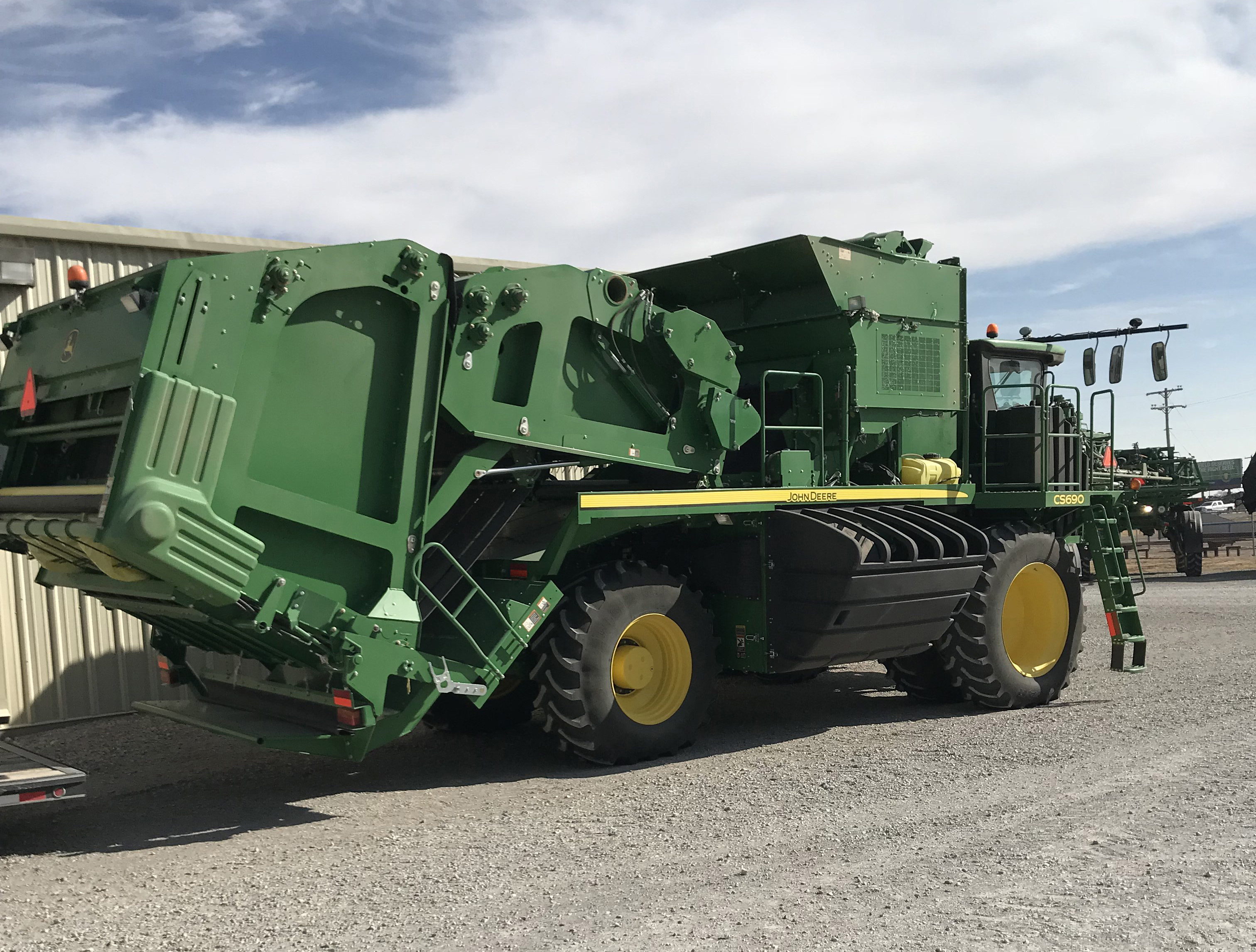Farm & Ranch
The Future of Cotton Harvest is amongst us

By Payton Coker, WTAMU Student
A debate of epic proportion in the agricultural industry revolves around cotton country. Since the introduction of the John Deere CS690 in 2014, the conflict between traditional cotton strippers and the new stripper balers has caused producers to struggle to keep up with new technology, the cost and the repair bills on their aging traditional cotton harvesting equipment.
In the past, harvesting cotton required an extensive number of operators to accomplish necessary duties, such as run the boll buggy, module builder and cotton stripper itself. The stripper baler, on the other hand, is a single operator show where one operator can strip and produce bales of cotton with one machine.
Production is key in modern agriculture, especially with a time sensitive crop like cotton, where moisture and wind can rip the product from the boll. When harvest time comes around, producers scramble to collect their crop from the field before a potentially wet winter can claim the crop. With cotton being planted at an all-time high in the Panhandle, the need and want for effective harvesting is apparent.
Prior to 2014, the only cotton harvester John Deere had on the market was the 7460, the conventional basket harvester and the 7760 cotton picker baler. The basket harvesters are time-tested machines, dating back to 1950 and the release of Deere’s first self-propelled cotton picker. The problem with the basket system lies in the inability to continually harvest cotton without stopping to unload or wait on tractors pulling the boll buggy.
To read more pick up a copy of the May 2018 NTFR issue. To subscribe call 940-872-5922.
Farm & Ranch
Hazards of Backyard Poultry

By Barry Whitworth, DVM
Having backyard poultry is a popular agriculture enterprise. According to the United States Department of Agriculture, 0.8 percent of all households in the United States have chickens. People keep chickens for a variety of reasons with table eggs being one of the more common reasons.
Unfortunately, some of these poultry producers are not aware of the hazards that come with keeping poultry because many times they carry pathogens but appear healthy.
Chickens are carriers of several zoonotic diseases. These are diseases that can be passed from animals to humans. According to a recent survey in Pennsylvania, a majority of backyard poultry producers were aware of the dangers of avian influenza. However, this study also revealed that far fewer producers were aware of the risk of possible exposure to Salmonella and Campylobacter.
The lack of knowledge about the hazards of raising poultry likely contributes to the continued issues of Salmonella outbreaks associated with backyard poultry. In 2023, the Centers for Disease Control and Prevention reported 1,072 illnesses of Salmonella linked to backyard poultry, and 272 of those patients required hospitalization. Oklahoma reported 43 individuals with the disease.
To read more, pick up a copy of the April issue of NTFR magazine. To subscribe by mail, call 940-872-5922.
Farm & Ranch
Ag Elsewhere: Wyoming

By Tressa Lawrence
Babies are tucked away in every nook and cranny. Many ranchers across Wyoming have baby animals popping up all over this time of year.
Farm & Ranch
Ag Elsewhere: Montana

By Lindsey Monk
Another load of grain in to keep feeding the calves until the green grass can really start popping.
-

 Country Lifestyles1 year ago
Country Lifestyles1 year agoScott & Stacey Schumacher: A Growth Mindset
-

 Equine7 months ago
Equine7 months agoThe Will to Win
-

 Country Lifestyles7 years ago
Country Lifestyles7 years agoStyle Your Profile – What your style cowboy hat says about you and new trends in 2017
-

 Country Lifestyles4 years ago
Country Lifestyles4 years agoAmber Crawford, Breakaway Roper
-

 HOME7 years ago
HOME7 years agoGrazing North Texas – Wilman Lovegrass
-

 Country Lifestyles7 years ago
Country Lifestyles7 years agoDecember 2016 Profile, Rusty Riddle – The Riddle Way
-

 Country Lifestyles8 years ago
Country Lifestyles8 years agoJune 2016 Profile – The man behind the mic: Bob Tallman
-

 Outdoor9 years ago
Outdoor9 years agoButtercup or Primrose?






